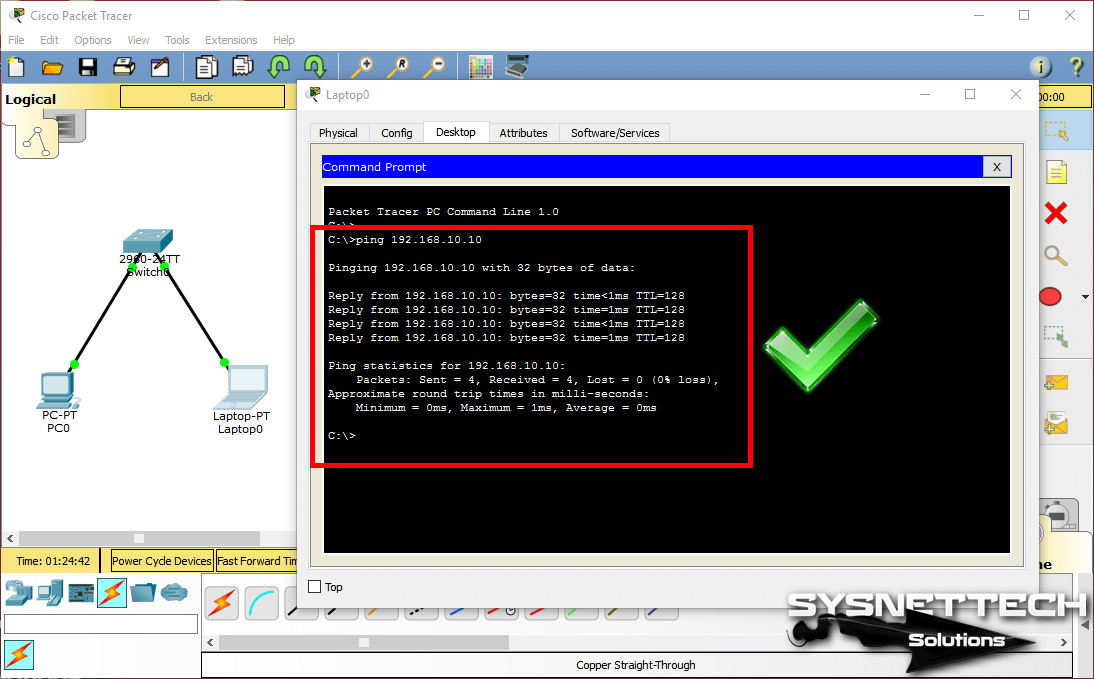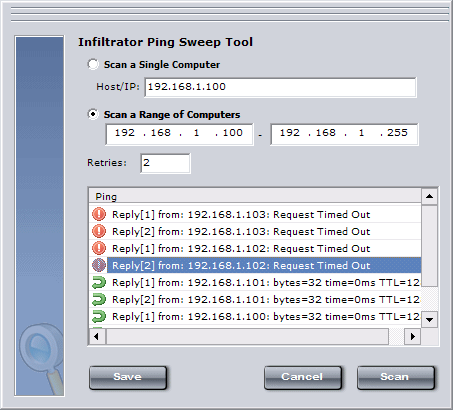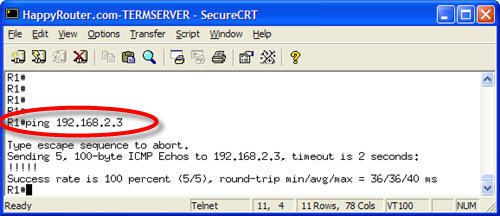
- Cisco ping sweep series#
- Cisco ping sweep download#
- Cisco ping sweep mac#
- Cisco ping sweep windows#
Repeat count – specify the number of ping packets that will be sent to the destination address. Target IP address – specify the IP address or hostname of the host you want to ping. Protocol – specify the protocol, such as appletalk, clns, ip, novell, apollo, vines, decnet, or xns. The following parameters can be modified: The extended ping command is invoked from the privileged exec mode by typing ping and pressing Enter. For example, with the extended ping command, you can define the source IP address as any IP address on the router, number of ping packets, different timeout interval, etc. Cisco IOS also supports the extended ping command that enables you to perform a more advanced check of the host reachability and network connectivity. The section provides the following options, with explanations and examples.īelow is an example of the ping.The ping command is used to test the accessibility of devices on a TCP/IP network. Multiple ranges can be separated by spaces. In the section, enter a network range using mask bits or you can use hyphen ranges (per nmap syntax). Make sure the credentials have the required access permissions. In the section, enter the base URL (FQDN or IP) for the Device42 appliance on your network, including credentials. Make a copy of this file and rename it to “ping.cfg” Copy or move to ping.cfg and add your settings as described below. Do this by setting the executable bit via $ chmod +x. On Linux, you'll need to set the *_linux file to executable. 
Cisco ping sweep download#
For Windows, you'll need to download the. d42_pingsweep_windows_64.exe (64bit version). d42_pingsweep_windows_386.exe (32bit version. Cisco ping sweep windows#
It runs on Windows or Linux platforms and has no external dependencies. The External Ping Sweep utility is a stand-alone tool that will do a ping sweep on specified networks, and upload the results to the Device42 appliance. Please note that there are both a built-in Ping Sweep tool and a stand-alone external version of the tool (see the following section) that runs as a stand-alone Windows application.Doing a discovery using a wireless card would only discover itself.For example, some networks that live behind load balancers, as some LBs will reply to pings for every IP on a given range. Depending on the behavior of your network devices, some subnets / IP addresses will show up as used.If the reverse DNS option is selected, discovery will take longer.
Cisco ping sweep mac#
MAC address discovery works only for local LANs. Other Ping Sweep considerations and best practices: Please make sure to add the respective subnets in Device42 before discovering and uploading IP information – otherwise all IPs will go to an "undefined" subnet. General Ping Sweep Usage Considerations Select Resources > IP Addresses from the Device42 menu to display the IP Address list page. You can select Run Now in the Ping Sweep jobs list to run the job right away.  Configure a schedule for the job in the Auto Discovery Schedule section, and then save the job. Other options include Strip domain name suffix and an option to Create new subnet for networks not found. (The default is unchecked – we recommend leaving it unchecked unless your DNS is perfect to avoid creation of duplicate devices.) If you want to use reverse DNS values as device names, select the Add devices by reverse DNS of discovered IP check box. Multiple ranges can be separated via commas, spaces, or new lines. Enter a network range using mask bits in slash notation or hyphenated IP ranges (nmap-style syntax). Enter a name for the job, and specify your target network(s) in the Networks: field.
Configure a schedule for the job in the Auto Discovery Schedule section, and then save the job. Other options include Strip domain name suffix and an option to Create new subnet for networks not found. (The default is unchecked – we recommend leaving it unchecked unless your DNS is perfect to avoid creation of duplicate devices.) If you want to use reverse DNS values as device names, select the Add devices by reverse DNS of discovered IP check box. Multiple ranges can be separated via commas, spaces, or new lines. Enter a network range using mask bits in slash notation or hyphenated IP ranges (nmap-style syntax). Enter a name for the job, and specify your target network(s) in the Networks: field. 
To edit an existing job, click its name to display its details, and then click Edit. Adding a New Ping Sweep Autodiscovery Ĭlick Add Ping Sweep on the view Ping Sweep page.

Scroll to the Using the External Ping Sweep Utility section below for information on using the stand-alone tool.
Cisco ping sweep series#
Select Discovery > Ping Sweep from the Device42 main menu to display the view Ping Sweep page.ĭevice42's Ping Sweep autodiscovery performs a series of pings against the specified network(s), performing a quick initial discovery of which IPs are live (respond to pings) and which are not.įor the time being, an external stand-alone Ping Sweep utility is also still available (may be deprecated in the future).








 0 kommentar(er)
0 kommentar(er)
